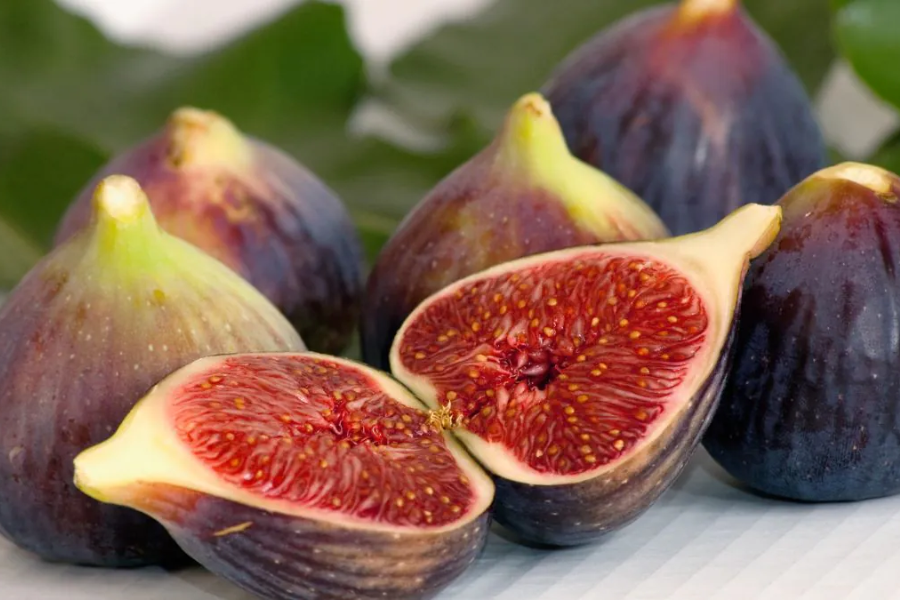The Versatile Delight: Exploring the Friday Fig
Welcome to the delightful world of the Friday Fig – a fruit that has tantalized taste buds for centuries with its unique sweetness and versatility. In this comprehensive exploration, we will take you on a journey through the history, nutritional benefits, various types, and delicious recipes featuring this luscious fruit. Get ready to embark on a fig-tastic adventure that will leave you craving more of this versatile delight!
The History and Origin of Figs
Historical Background
The fig, scientifically known as Ficus carica, is one of the oldest cultivated fruits, with evidence of its use dating back to ancient civilizations. Figs have been cultivated for thousands of years, with evidence suggesting they were one of the first fruits domesticated by humans. Originating in Western Asia, figs spread to ancient Egypt and Greece, becoming a symbol of abundance and fertility. The fig is believed to have been a staple in the diets of early societies, revered not only for its flavor but also for its medicinal properties.
Geographic Origins
Native to the Mediterranean and parts of Western Asia, figs thrive in warm climates. The Friday Fig, however, is thought to have originated from the Middle East, specifically regions that are now part of modern-day Turkey and Syria. Over time, this variety spread to other parts of the world through trade and exploration. Figs held a mystical allure due to their unique growth pattern – they do not blossom like other fruits but develop inside out. The cultivation of figs eventually spread across Mediterranean regions and beyond thanks to trade routes established by civilizations such as the Romans. Today, figs are enjoyed worldwide for their delicious flavor and numerous health benefits.
Nutritional Benefits of Figs
Rich in Nutrients
Figs are not just delicious; they also pack a punch in the nutrition department. These sweet fruits are rich in fiber, making them great for digestion and keeping you full longer. They are loaded with essential vitamins and minerals like vitamins A, B6, and K, potassium, and manganese. Figs are an excellent source of dietary fiber, which aids in digestion and promotes a healthy gut. Additionally, they contain significant amounts of vitamins B1, B2, and essential minerals like potassium, magnesium, and calcium.
Health Benefits
The nutritional profile of Friday Figs contributes to numerous health benefits. If you’re looking to boost your immune system, figs have got your back. They contain antioxidants that help fight off free radicals in the body and keep you healthy. Figs are also known for their potential to lower blood pressure due to their high potassium content. The high fiber content helps regulate blood sugar levels, making them a suitable snack for people with diabetes. The presence of antioxidants, particularly polyphenols, helps combat oxidative stress and reduces the risk of chronic diseases. Furthermore, the potassium in figs supports cardiovascular health by helping to maintain healthy blood pressure levels. For those watching their weight, figs can be a great addition to your diet as they are low in calories but satisfyingly sweet. Additionally, they provide a natural source of energy without spiking your blood sugar levels too much.
Exploring Different Types of Figs
When it comes to figs, there is a delightful variety to explore. One popular type is the Black Mission fig, known for its deep purple skin and sweet flavor. Then, there’s the Kadota fig with its light green skin and milder taste compared to other varieties. The Calimyrna fig stands out with its golden skin and nutty flavor profile, making it a favorite for snacking or adding to salads. Another interesting type is the Adriatic fig, recognized by its pale green or yellowish skin and honey-like sweetness. For those looking for something unique, Tiger Stripe figs are a visually striking option with their striped exterior and vibrant red flesh inside. Each type of fig brings its own distinct characteristics to the table, offering a versatile range of flavors and textures to enjoy in various culinary creations.
Delicious Recipes Using Figs
Looking to add a touch of sweetness and sophistication to your meals? Figs are the answer. These versatile fruits can elevate both savory and sweet dishes effortlessly.
Fresh and Dried Forms
Friday Figs can be enjoyed in various forms. Fresh figs are often consumed as a snack or added to salads, desserts, and appetizers. Their natural sweetness pairs well with savory ingredients like cheese and prosciutto. Dried figs, on the other hand, are a convenient option for year-round consumption. They are used in baking, cooking, and as a topping for cereals and yogurt.
Traditional Recipes
In many cultures, Friday Figs are featured in traditional recipes. For example, in Middle Eastern cuisine, figs are used in savory dishes like stews and tagines. In Mediterranean countries, they are incorporated into pastries and sweet treats such as fig bars and tarts. Additionally, figs can be used to make preserves, jams, and chutneys, offering a versatile ingredient for both sweet and savory applications.
Creative Culinary Uses
For a simple yet elegant appetizer, try wrapping figs in prosciutto and baking them until caramelized. The combination of salty prosciutto with the rich sweetness of figs is truly divine. Incorporate figs into your salads for a burst of flavor and texture. Pair them with arugula, goat cheese, and walnuts drizzled with balsamic vinaigrette for a refreshing summer salad that will impress any guest. If you have a sweet tooth, consider making honey-roasted figs topped with Greek yogurt and a sprinkle of cinnamon for a guilt-free dessert option that feels indulgent. Experimenting with figs in your cooking opens up endless possibilities to create memorable dishes that will leave everyone craving more.
Other Uses for Figs in Cooking and Baking
Figs are not just limited to being eaten fresh; they can also be used in a variety of ways in cooking and baking. One popular use for figs is making jam or preserves, which can add a unique sweetness to your breakfast toast or cheese platter. In savory dishes, figs can be paired with meats like prosciutto for a delicious flavor combination. They can also be roasted or grilled as a side dish or added to salads for an extra burst of flavor and texture. When it comes to baking, figs can be incorporated into cakes, muffins, and bread for a sweet and moist addition. Fig compote can also be used as a filling for pastries or drizzled over desserts like ice cream or yogurt. The versatility of figs makes them an exciting ingredient to experiment with in the kitchen.
Fun Facts and Trivia About Figs
Did you know that figs are not actually a fruit but an inverted flower? That’s right, the seeds of the fig plant are inside the fruit, making it botanically unique. Figs have been cherished for centuries and were even mentioned in ancient writings like the Bible and Quran. Another interesting fact about figs is their incredible shelf life. They have a long history of being used as a natural sweetener before sugar became widely available. Figs contain important nutrients like fiber, vitamins, and minerals which make them a healthy addition to your diet. In some cultures, fig leaves are also used in cooking to impart flavor to dishes or wrap food for baking. This versatile fruit can be enjoyed fresh or dried, adding a sweet and chewy texture to both savory and sweet recipes. Whether eaten on their own or incorporated into various dishes, figs offer a delightful burst of sweetness with every bite.
Cultural Significance of Figs
Symbolism and Folklore
Figs have long been associated with various symbolic meanings and folklore. In many cultures, figs symbolize fertility, abundance, and prosperity. In ancient Greece and Rome, they were considered sacred and were often associated with deities. The Friday Fig, in particular, holds a special place in some Middle Eastern traditions, where it is believed to bring good luck and blessings.
Religious Importance
In several religious texts, figs are mentioned as significant fruits. In the Bible, figs are frequently referenced, symbolizing peace and prosperity. In Islam, figs are considered one of the fruits of Paradise and are mentioned in the Quran. The day Friday itself holds religious importance in Islam, which could contribute to the naming of the Friday Fig.
Challenges and Opportunities in Fig Cultivation
Pest and Disease Management
Growing figs, including the Friday Fig, comes with challenges. Fig trees are susceptible to pests like fig beetles and aphids, as well as diseases such as fig rust and mosaic virus. Effective pest management and regular monitoring are crucial to maintaining healthy fig trees.
Sustainable Practices
There is a growing interest in sustainable farming practices among fig growers. Utilizing organic methods, conserving water, and promoting biodiversity can enhance the sustainability of fig cultivation. Furthermore, educating farmers about these practices can lead to better yields and healthier ecosystems.
Conclusion: Why the Friday Fig is a Must-Try Fruit
The Friday Fig is truly a versatile delight that has captivated taste buds for centuries with its unique flavor and texture. Whether enjoyed fresh, dried, or incorporated into various dishes, figs offer a delightful sweetness and nutritional benefits that make them a must-try fruit. With their rich history dating back to ancient times, figs have stood the test of time as a beloved fruit cherished by many cultures around the world. Packed with essential nutrients like fiber, vitamins, and minerals, figs not only satisfy your taste buds but also contribute to your overall well-being.
From classic pairings like fig and cheese platters to innovative recipes such as grilled figs with honey and goat cheese, there are endless ways to savor the deliciousness of this fruit. Figs can be used in both sweet and savory dishes, adding a touch of elegance and flavor that elevates any meal. Beyond culinary uses, figs also have practical applications in baking, providing natural sweetness and moisture to baked goods without the need for excessive sugar or fats. Their versatility makes them an excellent ingredient for jams, chutneys, sauces, and even desserts like cakes and tarts.
“Explore the inspiring journeys of healthcare leaders at vlineperol.blog.”







